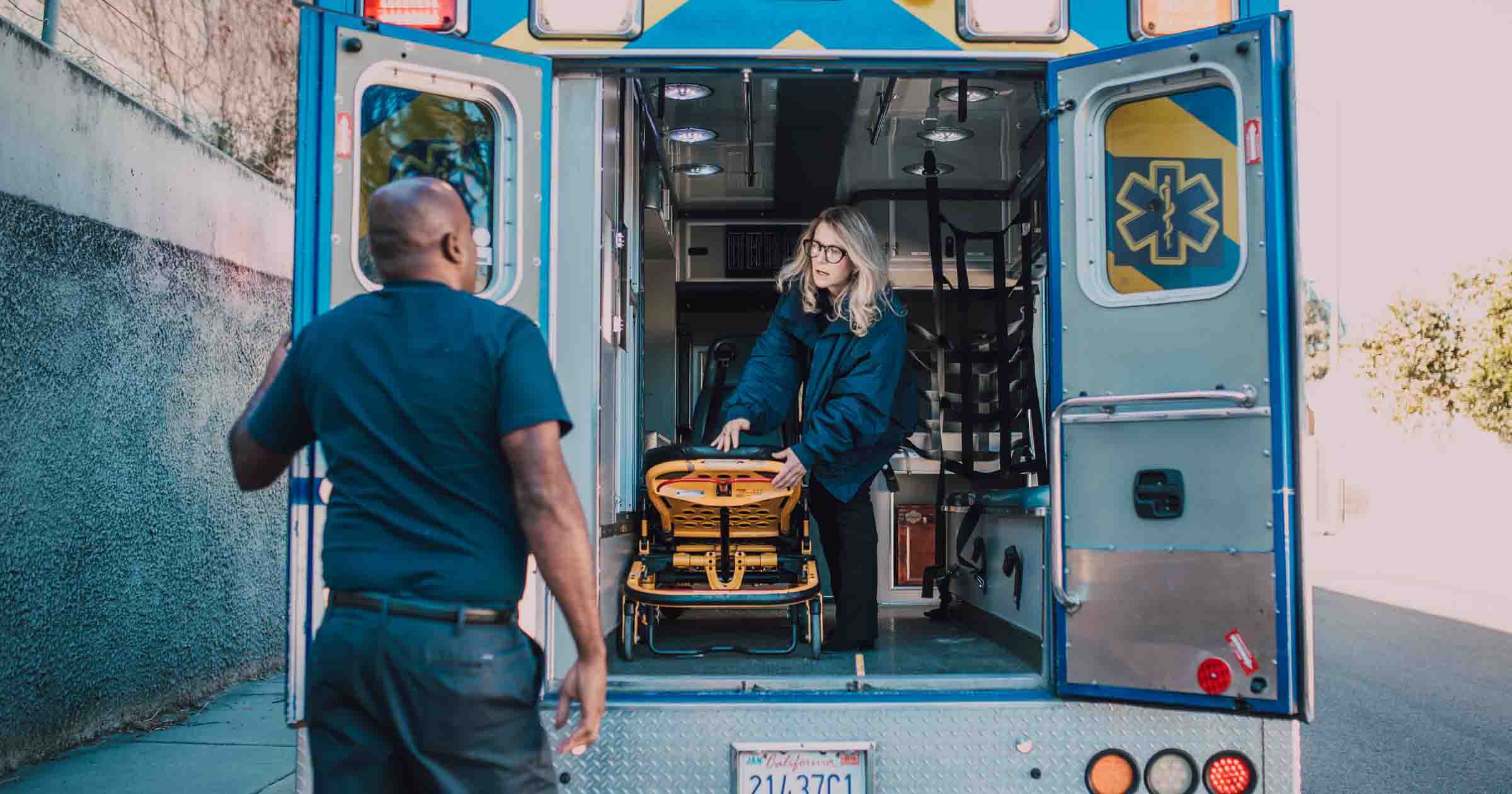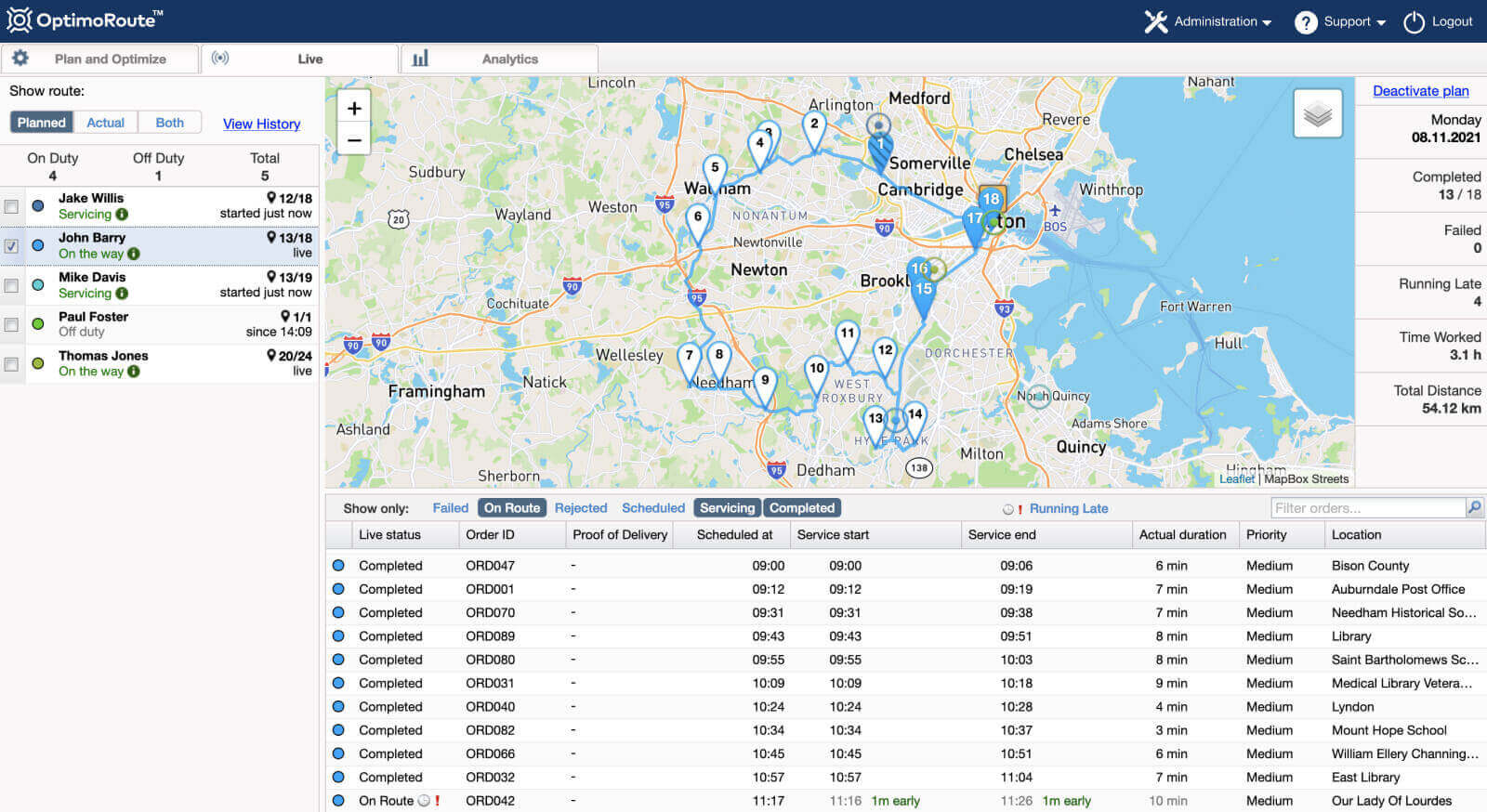Patient Transport Vs. Transfer Software: What They Are and When You Need Them

Nearly 18% of Americans depend on Medicaid for healthcare. More than 3.2 million of those Medicaid recipients rely on non-emergency medical transport (NEMT) services for care, according to recent data from MACPAC. NEMT is essential for patients with chronic conditions like end-stage renal disease (ESRD), which requires patients to attend frequent dialysis appointments for treatment.
It’s vital NEMT providers get patients to their appointments on time. Otherwise, patients might be forced to reschedule their appointment and may still be expected to pay for the missed appointment. Using a patient transport system helps NEMT businesses get patients to appointments on time with weekly planning features that optimize transport routes.
Jump to the part that interests you most:
- Patient Transport Vs. Transfer: How They’re Different
- Does My Organization Need Patient Transport or Transfer Software?
- 5 Features to Look for in Patient Transport Software
- OptimoRoute: The Streamlined Patient Transport Software Solution
Patient Transport Vs. Transfer: How They’re Different
Though they sometimes work together, patient transport and patient transfer are two different things. In the next sections, we’ll explain what each term means, their differences, and how they can work together.
What is patient transport?
Patient transport refers to the process of moving a patient from one location or care facility to another. This includes all kinds of transit, including rides to a doctor’s office or taking an ambulance to an emergency department. Most often, patient transport refers to non-emergency medical transportation (NEMT). One example of this would be transporting a patient from a nursing home to a hospital for dialysis treatment. Non-emergency patient transportation also encompasses our example patient’s trip from the hospital back to their nursing home.
Federal laws stipulate individuals must have access to NEMT services, deeming them to be an “essential benefit” that allows patients to get to and from their medical appointments on time. Medical professionals or patients can coordinate transport by calling a NEMT business like Access-A-Ride to plan scheduled pick-ups and drop-offs. Some healthcare facilities may even provide this benefit directly to their patients by partnering with a private patient transport service to provide rides to specific facilities and treatment centers.
What is patient transfer?
Patient transfer refers to much smaller-scale patient moves, such as physically moving a patient from a chair to a bed, usually with the help of a tool such as a Hoyer lift. Less commonly, patient transfers refer to a patient’s movements within a healthcare facility, such as moving a hospital patient out of surgery and into a recovery room for observation. In larger care facilities, like the University of Colorado’s Anschutz 256-acre medical campus, patient transfers may include moves from one campus building to another and may take longer than smaller transfers within a single building. These larger transfers require a higher level of planning to account for factors like patient flow, which medical professionals will be available to support the patient during the transfer, and how healthcare providers in the new location can access the patient’s records to see the care plan.
How are they different?
Transfers are smaller than transports and involve moving a patient within a care facility. Transports, on the other hand, are larger and involve moving a patient from one care facility to another. Transports involve a vehicle, such as a bus or a van, to relocate the patient.
Though they are distinctly different, these two patient moves are occasionally related because some transfers also utilize transport. On large medical campuses where treatment centers may be spread out, the facility may use both when an internal transport team moves or “transfers” a patient. For example, the University of Utah’s health system offers shuttles to transport patients to different areas on its expansive campus, such as an on-demand shuttle that takes patients from the on-campus Guest House to the University Hospital. The University of Colorado similarly offers shuttle services to help with patient flow across its massive campus.
Does My Organization Need Patient Transport or Transfer Software?
A patient transport solution streamlines route planning and provides drivers with efficient directions. As such, any business or healthcare provider that relies on vehicles for patient transportation can benefit from transportation scheduling software like OptimoRoute. NEMT businesses can improve workflows by planning routes weeks in advance and modifying routes last minute if the day’s plan changes. Nursing homes and hospice facilities can also leverage this software to transport patients and residents from the facility to a healthcare provider’s office or hospital for appointments. Patient transport software is also useful for businesses that deliver medical supplies, such as pharmacies that offer medication delivery.
Health systems that provide inpatient care in a single location (hospitals, rehabilitation centers, dialysis facilities, etc.) likely do not need transport software. They need patient transfer software to track where patients receive care and plan patient moves to other parts of the facility. This can be done with dedicated transfer software or with other medical software like an electronic health records system (EHR), which also tracks and records important patient information.
Healthcare facilities with large campuses, like Anschutz or the University of Utah’s healthcare system, need both types of software. Transfer software will help to plan for all movement on the campus, ensuring patient care needs align with what the facility can provide based on staffing and treatment availability and lowering wait times for patients. Transport software will help to get patients to their appointments on time by planning efficient routes.
5 Features to Look for in Patient Transport Software
Every business or healthcare provider has unique needs to provide the highest level of patient care and will have different priorities for must-have medical software features. With this in mind, there are still five transportation software features that help every business or health system provide a better patient experience, regardless of what makes the organization unique.

Live tracking and ETA
Live tracking and an ETA provide you with full visibility into your transportation services. These features allow you to see exactly where your vehicles are and when they’ll arrive at their location. If you get a phone call from an anxious patient who needs to know where their transportation is, you’ll have all the latest information to answer their questions and assure the rider they’ll make it to their appointment on time.
Driver scheduling and weekly planning
You can’t plan routes at the last minute if you hope to get patients to their appointments on time. OptimoRoute can automatically plan routes up to five weeks in advance after you provide the system with important information like driver schedules and availability. This allows you to schedule patient rides weeks ahead of their appointment, eliminating stress for your riders, improving their overall experience, and boosting patient satisfaction.
Patient notifications and real-time tracking
You can’t stick to your schedule for the day if patients aren’t ready when their transport arrives to pick them up. You can prevent this problem by sending a confirmation about their ride and an update when it’s en route. Be sure to look for robust communication features like text messaging when shopping for transport software, so you and your riders stay on the same page.
Route modification and replanning
Not every route will go exactly as planned, and you need software that can adjust to changes in real-time. For example, if a patients’ appointment ends early, you’ll need to arrange for an early pickup. OptimoRoute offers dynamic route modification, which allows you to add in last-minute changes to routes and re-optimise immediately. Or, you can chose to keep the original optimised route and add in the last minute changes without disrupting the schedule.
Pickup and delivery
Drivers need to know the expectations at each destination on their route in order to meet each patient’s care needs. To provide this information, you need features that allow you to label each destination as either a pickup or a drop off. OptimoRoute’s pickup and delivery capability allows you to do this while also accounting for each vehicle’s available space. This helps to avoid problems like a driver with a full passenger load being scheduled for a patient pickup.
OptimoRoute: The Streamlined Patient Transport Software Solution
OptimoRoute offers key features like live tracking, weekly planning, and customer notifications which can be accessed via a mobile app to help your business streamline its transport efforts through route optimization. To see how optimized route planning can streamline your transport processes, try OptimoRoute today, free for 30 days!
Try OptimoRoute™ for Free
No installation or credit card required


